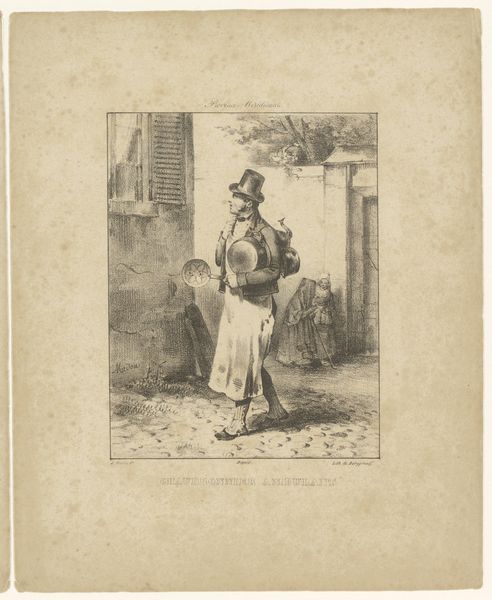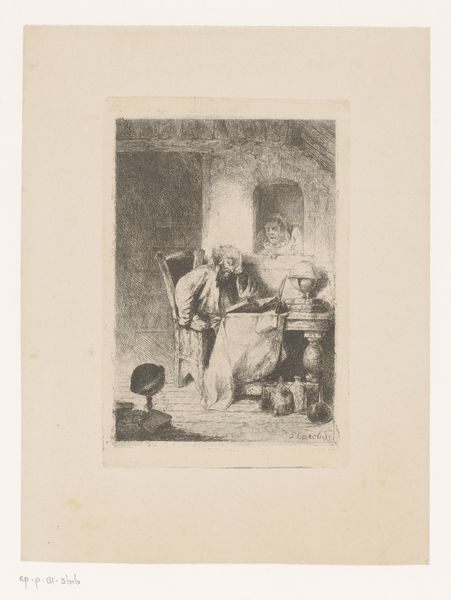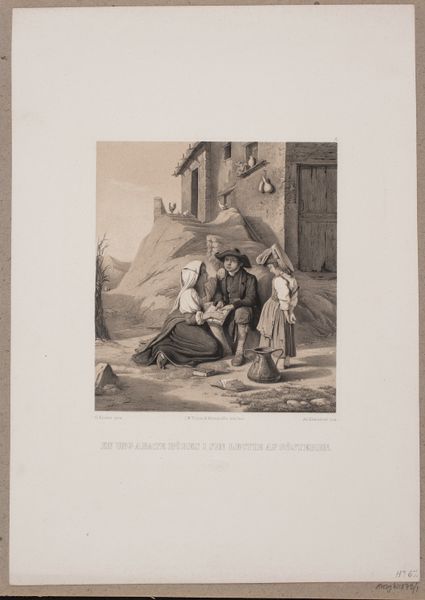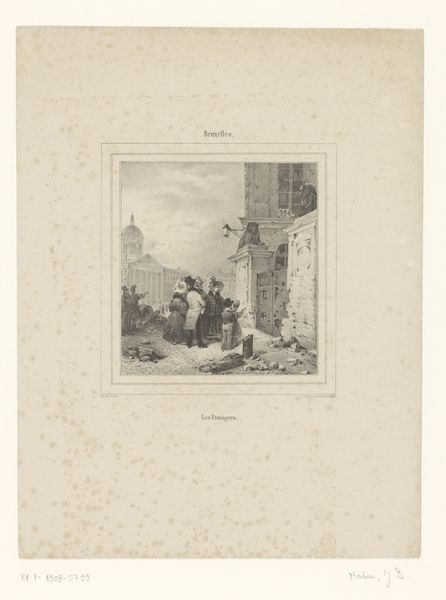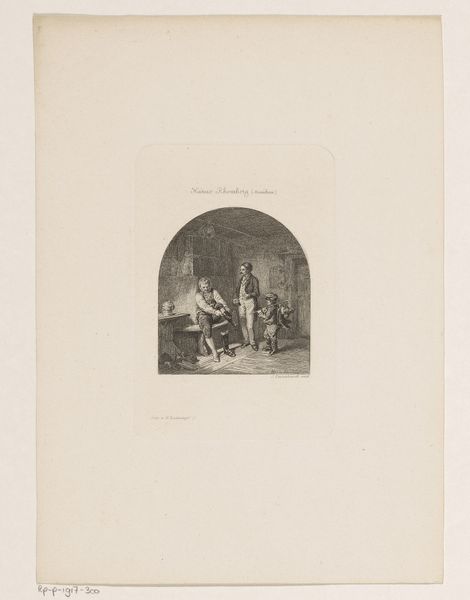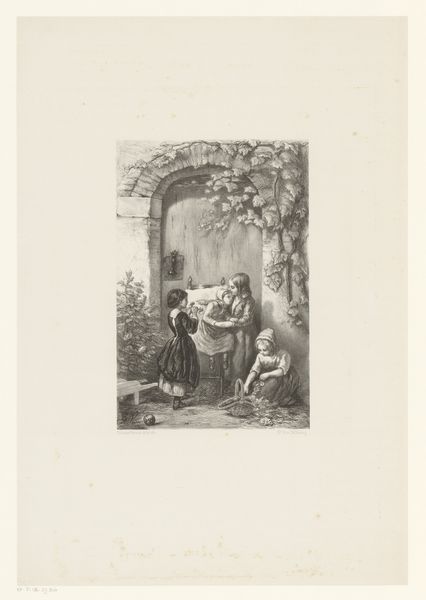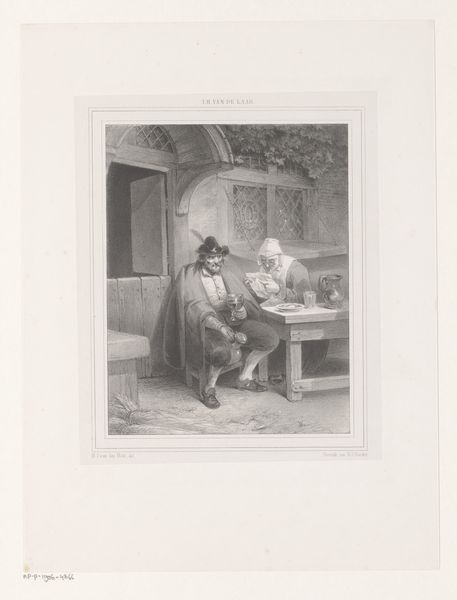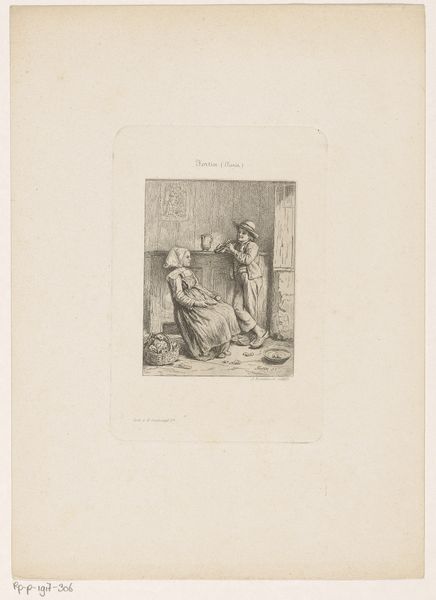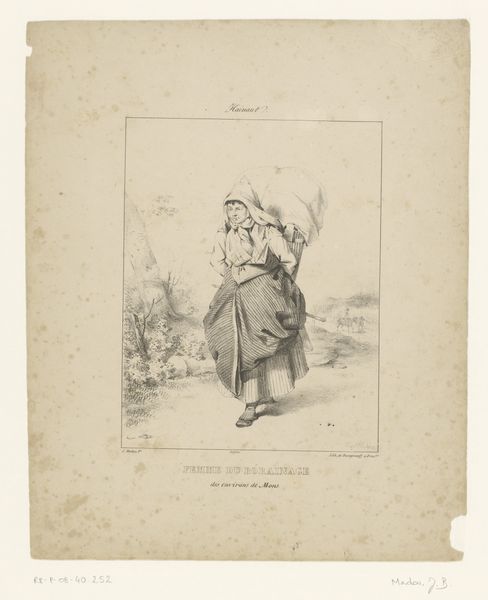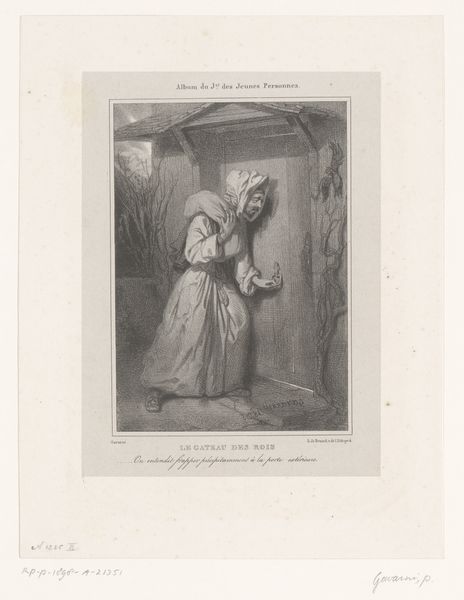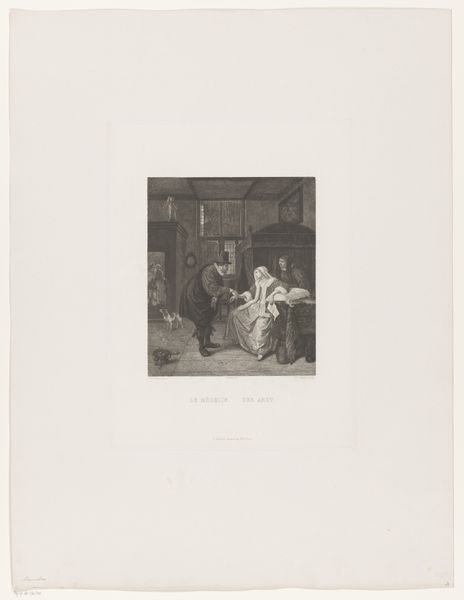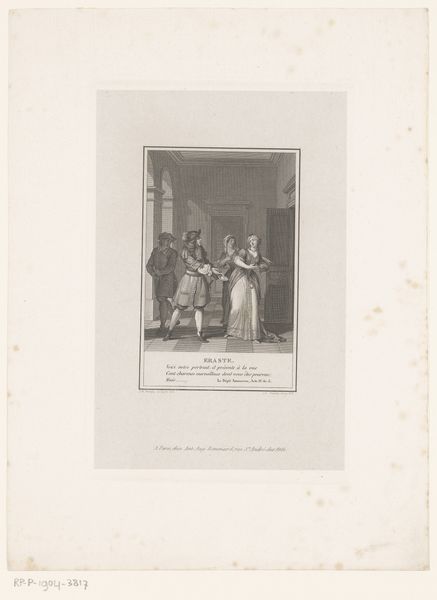
print, engraving
#
narrative-art
# print
#
landscape
#
figuration
#
romanticism
#
genre-painting
#
engraving
Dimensions: height 447 mm, width 308 mm
Copyright: Rijks Museum: Open Domain
Jean-Baptiste Adolphe Lafosse created this print of a woman and child visiting a prisoner using lithography. This printing technique, developed in the late 18th century, involves drawing on a flat stone or metal plate with a greasy substance, then applying ink that adheres only to the drawn areas. The resulting prints, like this one, could be produced in large numbers, making images more accessible to a wider audience. Look closely, and you can see how the lithographic process renders the image with soft gradations of tone, creating a sense of depth and atmosphere. The artist would have needed considerable skill to create the drawing in reverse on the plate, capturing the emotional weight of the scene. This reproductive method allowed for distribution of images beyond the elite circles who could afford original paintings, influencing social and political discourse. The choice of lithography highlights the democratization of art in the 19th century, challenging traditional notions of artistic value and accessibility.
Comments
No comments
Be the first to comment and join the conversation on the ultimate creative platform.
